Note: This is Part 2 of a 3-part workshop called I Can’t Draw! You can read Part 1 here.
Last week, I wrote about how many of us came to be so critical of our artwork, proclaiming it good or bad based on rules, judgment, and comparison. About how we, at some point in our lives, shifted from drawing for fun to drawing for perfection. And finally, how adopting the Might Could Mindset (not can, not can’t, but might could!) can help us remain open, expand our idea of what’s possible, and stay light-heartedly positive, leading to an invigorated creativity!
Sounds great, right? But now you’re probably thinking, “Ok, but like… how does it work? How do I do that?” So that’s where we’re going today!
The 3 Big Artistic Challenges
Theory is great and all, but let’s move into the realm of practice. Let’s see the Might Could Mindset in action with what I’m calling the Three Big Artistic Challenges!
In the drawing world, many people (even tons of professional artists!) often harbor one or all of these three beliefs:
I can’t draw faces
I can’t draw hands
I can’t draw horses
And I get it! Those things can be extremely difficult to draw. But let’s zoom out and think about why these three subjects seem so challenging to draw.
I Can’t Draw Faces!
If you are someone who believes you can’t draw human faces, and you think about sitting down at your desk to attempt to draw a face, I bet the imagery that comes to your mind looks something like this:
Anatomical illustrations, skeletal frames, and musculature maps. Precise proportions, detailed instructions, and rules to follow.
The images on the right above are from the book, Figure Drawing for All It’s Worth by Andrew Loomis. The book is a bit dated, published back in 1943, but many artists still view it as a classic illustration textbook. To me, though, this book (and its method of drawing) is a roadblock.
If you currently believe you can’t draw faces, and the images above are what you’re attempting to achieve and comparing your own drawings to, you’re likely to be overcome by the challenge and daunted by the large gap between what’s on your page and what’s in this book. Or you might feel stifled and locked down by the strict rules and measurements dictated in this book.
To be clear, I am not saying that drawing realistically is bad or wrong. Audrey Kawasaki is one of my favorite artists and she draws her human characters quite realistically in terms of proportion and anatomy. I am saying this: there is no wrong way to draw faces, and therefore, there is no right way to draw faces. Drawing realistically is not the pinnacle of drawing—it’s not the strongest, best, or right way. It is merely one of many, many styles and ways of drawing.
In his book, Andrew Loomis is showing you how to draw the way he draws. Perhaps that style and approach to drawing comes naturally to you, feels good to you and you enjoy it—if so, great!
But there are infinite ways to draw faces!
Who’s to say that the way I draw faces, as seen above, is wrong? Are these faces proportionally correct? No. Are they representative of realistic anatomy? No! Do I care? Heck, no! This is the style and way of drawing that comes naturally to me, that feels good, and that I personally and subjectively like best! And this too, is not the ultimate-right-way of drawing. It’s just my way, that’s all!
So what is at the root of your belief that you can’t draw faces? Is it that you’re actually incapable of doing so? Or is it that you’ve only tried to do it in one, narrow way that maybe just didn’t jive with you?
If you approach drawing faces instead with a Might Could Mindset of openness, possibilities, and light-hearted positivity… suddenly a world of options opens up and you feel more free to explore, experiment, and play! Not only are you more likely to have fun and stick with drawing (leading you to grow and improve), but you’re also more likely to discover your own unique way of drawing faces, rather than imitating someone else and following someone else’s rules. Your way is the best way.
I Can’t Draw Hands!
So what about the dreaded hands? The same ideas apply—we can approach drawing hands in a very specific narrow way, attempting to draw hands based on strict realism and rules.
Or we can ditch the rules, expand our options, and draw hands in a multitude of different ways! We can simplify, exaggerate, and experiment with what makes a hand a hand. Hands could have five fingers, four fingers, or even no fingers! Arms could be wiggly spaghetti noodles!
We could approach drawing hands with trepidation and a “there’s no way I could do that” attitude, or we could go the Might Could route and just see what happens when we loosen our idea of what a hand could look like!
I Can’t Draw Horses!
And lastly, perhaps the most difficult thing to draw in the entire world: horses. (Or is it bikes?) Horse anatomy makes no sense when you really look at it and attempt to draw it. Their legs go out at odd angles, they have huge muscles, their necks are giant, and their heads are just… weird!
You could attempt to draw a photo-realistic horse (and there’s nothing wrong with that, a lot can be learned from that exercise). But remember, sticking as close as possible to reality is not the only way to draw a horse.
If you try the realistic way, and you don’t enjoy it, don’t jump to assuming you “can’t draw horses”. Instead, try saying, “I might could!” Open up, lighten up, expand the possibilities, and try drawing a horse differently! Forget perspective, forget volume, forget realistic colors and shapes, and just draw!
Who says a horse can’t be drawn as a red blob with stick legs, a flat yellow mane, and two googly eyes on the same side of the head in a perspective that clearly would not happen in the real world?
I mean, why are you really drawing in the first place? To record and imitate the world around you in as close a manner as possible? Or to express something deeper, to dig down into the essence of the thing you’re drawing, and pull that out onto the page?
A realistically drawn horse based on the top photograph is just that: a drawing of a horse. It’s like a visual dictionary definition of the word horse. But the simplified, abstractly drawn horses in my example are something else: they’re closer to characters in a story. They’re not just drawings of horses, they also pull in some of me, how I was feeling when I drew them, what I think about horses, my experiences with horses, books/movies/stories I’ve heard about horses, and how horses look subjectively to me.
Allowing your unique way of seeing and interpreting the world to seep into your drawing is, in my opinion, when a drawing transcends into art. Perhaps you see things scientifically, mathematically, and realistically. Or perhaps you don’t.
Dropping the can’t mindset and shifting to a might could mindset can lead you to discover how all of that can come together on the page in a way that is quintessentially you. Faces drawn in your way. Hands drawn in your way. And horses drawn in your own unique way.
Next Up: Now It’s YOUR Turn!
Somehow this little Might Could phrase can shift my whole mindset. It simultaneously makes me take things more and less seriously. It makes me believe what I want to do—what I wish I could do—is possible, while also putting the onus on me to make it happen. It makes things feel approachable and doable. With this mindset, anything is possible. Drawing difficult things like faces, hands, and horses? Well, you never know what might could happen!
In Part 3 of this workshop, it’s your turn to draw. Next week we’ll put pen to paper with a special drawing exercise to encourage you to adopt the Might Could mindset and draw in a whole new way.
Thanks for reading—see you next week!
<3,
Christine



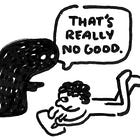
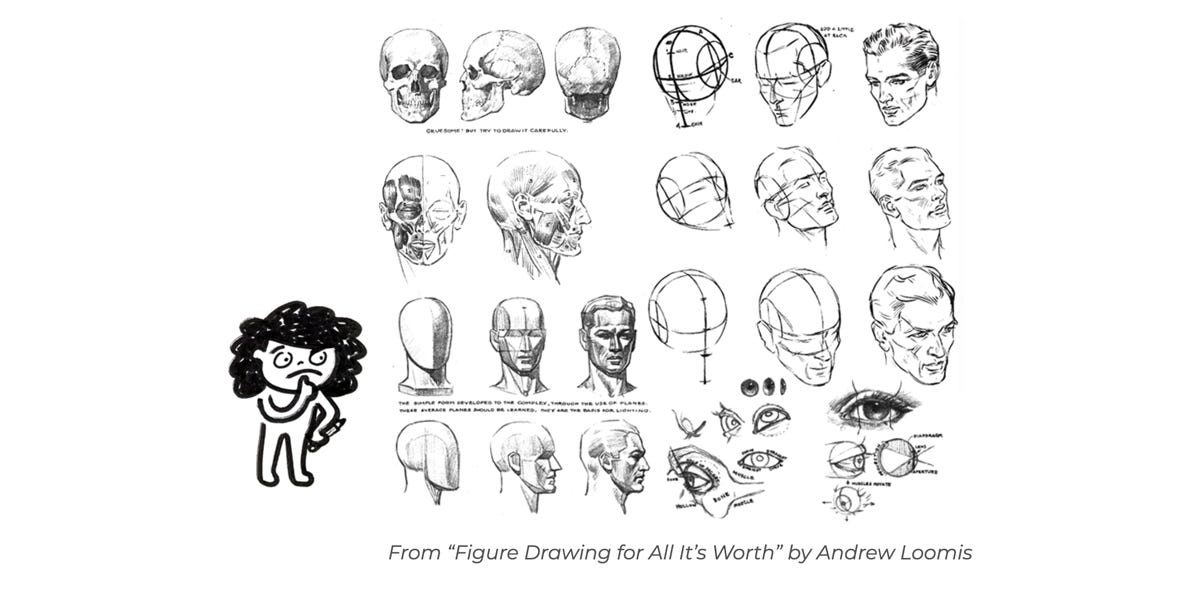
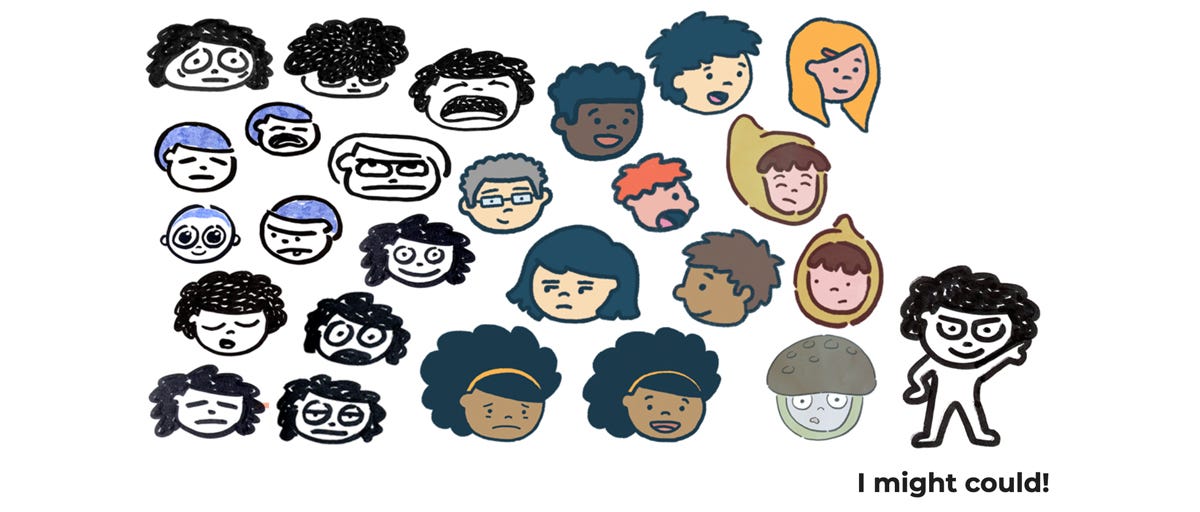
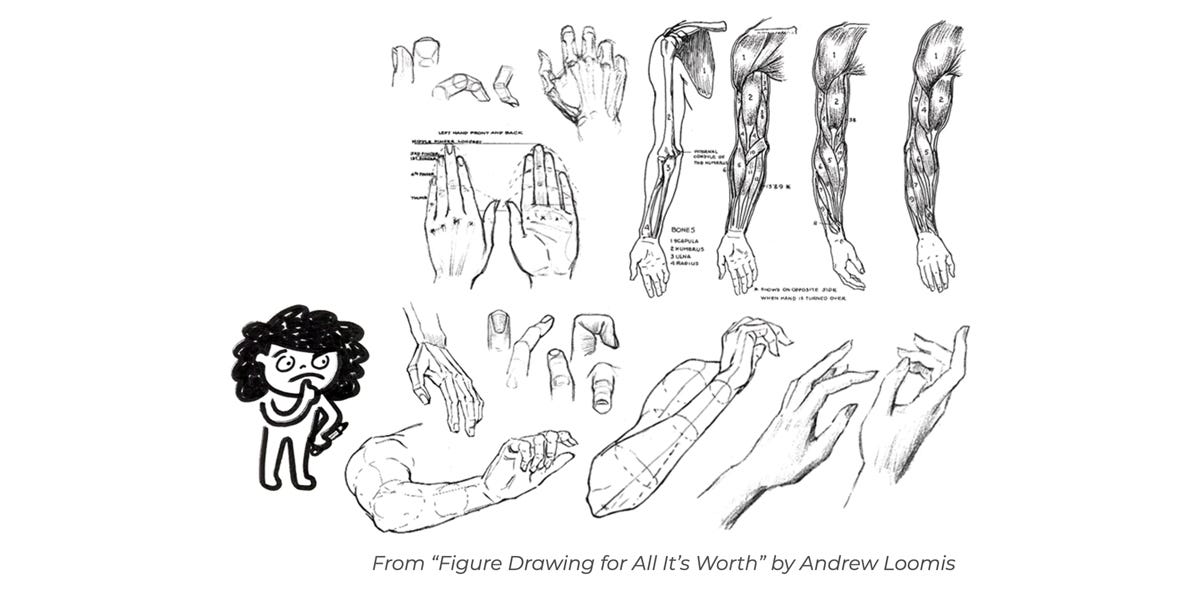
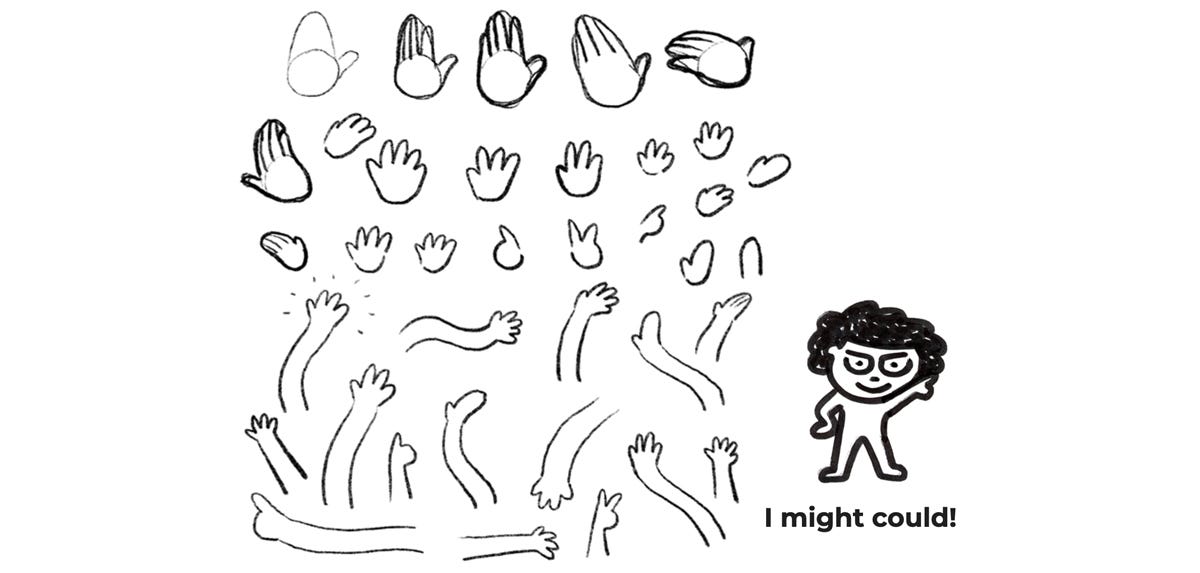
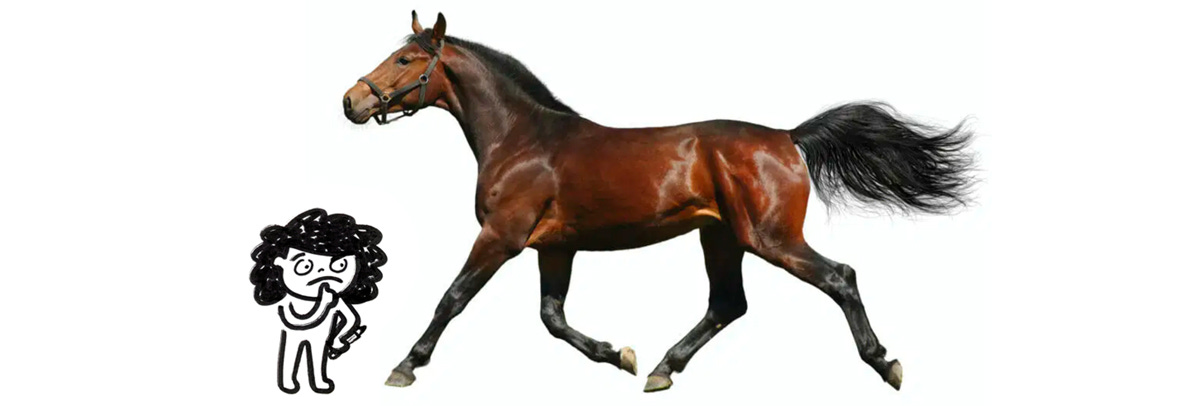


Loving this series Christine! Always loved ur Might Could approach. I'm still finding the style for my cartoon approach cause I know I don't want to go for surrealism! Loved your blobby horses & I could see a few other critters morphing from there lol. I found a stick figure book that had fun ideas for animals. Tons of ideas floating around. Thanks Again Christine!!
Very cool. I travel with an art company that’s very into nature journaling. They want us to capture every tiny detail. I can do details just fine but I’d rather take a photo then do art about how it makes me feel. So I’ll often have bits of detail linked together by watercolour wash and coloured pencils. First and foremost for me is the Art. I can now imagine your little characters on the page pointing out the facts - another addition that will contribute well to the nature Journaling perspective. Hugs my dear. Hoping your personal life is still going well. 🤗🤗🤗💕💕